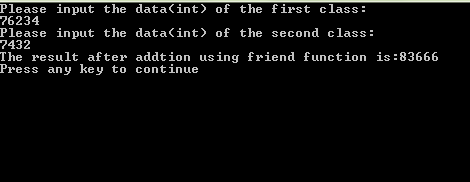Friend Functions in C++
Submitted by moazkhan on Monday, August 4, 2014 - 08:47.
Friend functions in C++
In this tutorial you will learn: 1. What are friend functions? 2. Why to use friend functions? 3. How to use friend function in a program? 4. Basic C++ syntax What are friend functions? Friend functions are those functions which can access the private as well as the protected data members of the classes. We can make a function friend of two classes so that this function can use the private and protected member of those classes to produce a specific result. We can also make two classes friends of each other. Why use friend functions? We use friend functions and classes whenever we need to access the protected and private members of the classes. Through friend functions we can directly access the private and protected members of a class, it is different by inheritance in a way that by using inheritance we can access the private members only using the member functions of the class. How to use friend functions? We make a function the friend function of a class by writing the keyword “friend” before the function which is called in some class. The example is as follow:

Add new comment
- 85 views

